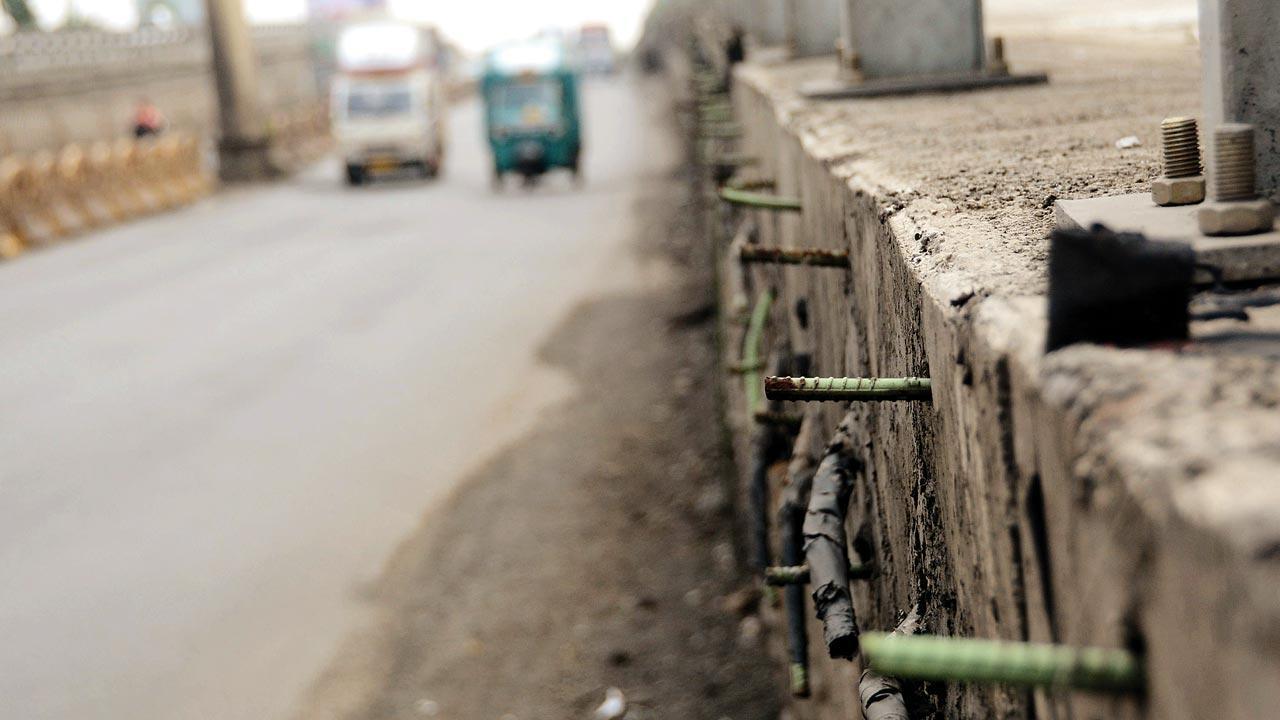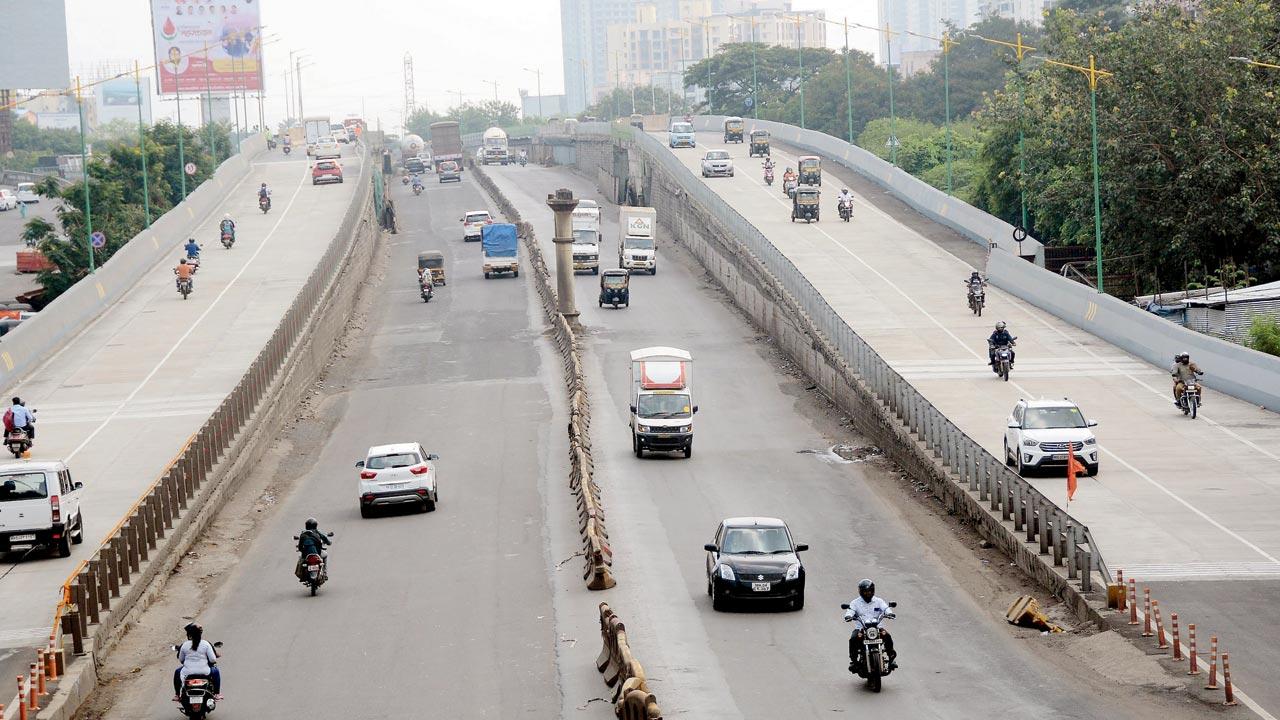MMRDA says spikes on Kopri overpass are part of the construction process and all of them will be bent soon to ensure no harm to anyone

The protruding iron bars on the Kopri bridge in Thane
Two days after the inauguration of the new Kopri bridge in Thane, motorists and bikers have complained of protruding iron rods that could prove dangerous to passing vehicles, especially two-wheeler riders. The spikes, on both sides of the new bridge on the Eastern Express Highway, have been left unattended.
ADVERTISEMENT
The bridge was recently inaugurated by PWD Minister Eknath Shinde in the presence of SVR Srinivas, chief of Mumbai Metropolitan Region Development Authority (MMRDA). Surprisingly, no one saw this which means it was not properly inspected, said motorists.
 Commuters say the rods can cause serious injuries. Pics/Sayyed Sameer Abedi
Commuters say the rods can cause serious injuries. Pics/Sayyed Sameer Abedi
“Initially, there were barricades, but after the inauguration, they are gone and these [rods] are directly jutting out onto the busy Eastern Express Highway. How can the authorities be so callous? asked biker Manish Pardeshi who commutes through the stretch every day. “Now that the inauguration circus and photos are done, the authorities should fix them,” said Janak Gala, another commuter. “The stretch where these two flyovers have been built have become narrow and during traffic jams, one needs to negotiate all possible ways on the road including moving close to the wall. Sadly, MMRDA has lost its professionalism if they are leaving such dangerous spikes on a bridge.”
The work on widening the highway on this stretch has been repeatedly delayed. Here, the highway passes over the rail lines. While many agencies, including the PWD and MSRDC, had been assigned the work, it was finally handed over to MMRDA. The first phase of the work is over. Officials said now the traffic from both sides will be diverted on the bridge before starting the second phase. The new four-lane flyover is 796-metre long and is 37.4-metre wide.
Standard practice: MMRDA
MMRDA said the rods are called “dowel bars” and they will be joined to the reinforcement of the second phase work to maintain structural continuity.
“This is standard practice to take out dowel bars for structural continuation of work executed over different periods,” the state agency said.
It added, “The bars are bent at most of the places to prevent any harm as already seen in one photo. However, a few left out are being immediately bent. The second phase of work begins in few days and then this existing road shall be closed for traffic. The traffic will move only on new road part which is at a higher level. Hence there will not be any traffic or pedestrian movement near these bars.”
 Subscribe today by clicking the link and stay updated with the latest news!" Click here!
Subscribe today by clicking the link and stay updated with the latest news!" Click here!







